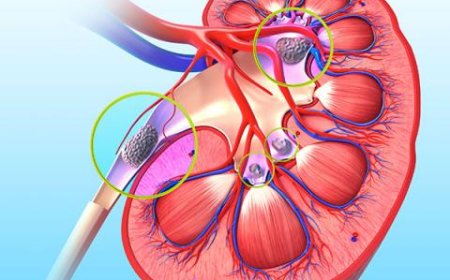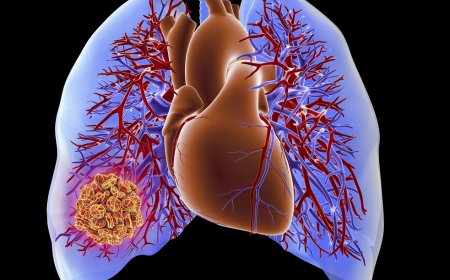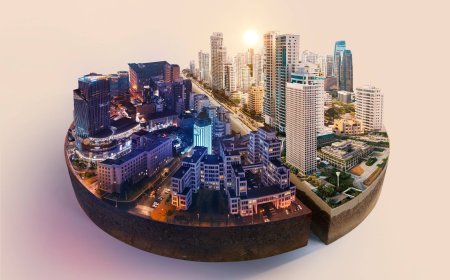How to Navigate Petroglyph National Monument Trails Albuquerque
How to Navigate Petroglyph National Monument Trails Albuquerque Petroglyph National Monument, located on the western edge of Albuquerque, New Mexico, is one of the most significant cultural and archaeological sites in the southwestern United States. Spanning over 17,000 acres, this protected area preserves more than 25,000 ancient rock carvings—petroglyphs—created by Native American ancestors and
How to Navigate Petroglyph National Monument Trails Albuquerque
Petroglyph National Monument, located on the western edge of Albuquerque, New Mexico, is one of the most significant cultural and archaeological sites in the southwestern United States. Spanning over 17,000 acres, this protected area preserves more than 25,000 ancient rock carvings—petroglyphs—created by Native American ancestors and early Spanish settlers between 1300 and 1680 AD. Beyond its profound historical value, the monument offers visitors a rare opportunity to walk among these engravings on well-maintained, accessible trails that wind through volcanic rock fields and desert landscapes.
Navigating the trails at Petroglyph National Monument requires more than just following a path—it demands preparation, respect, and awareness. Whether you’re a first-time visitor, a history enthusiast, or a local seeking a quiet outdoor escape, understanding how to properly explore these trails ensures both your safety and the preservation of irreplaceable cultural heritage. Unlike typical park trails, petroglyph sites are fragile, legally protected, and often unmarked. Missteps—such as touching carvings, straying from designated paths, or misidentifying symbols—can cause irreversible damage.
This guide provides a comprehensive, step-by-step roadmap to navigating Petroglyph National Monument trails with confidence, clarity, and cultural sensitivity. You’ll learn how to plan your visit, choose the right trail, interpret the petroglyphs, avoid common pitfalls, and use essential tools to enhance your experience. By following these practices, you don’t just walk through a monument—you become a responsible steward of its legacy.
Step-by-Step Guide
1. Plan Your Visit Before You Arrive
Success begins before you step onto the trail. Petroglyph National Monument is not a single, unified park with one entrance—it’s a series of disconnected trailheads spread across several miles. The most popular access points are the Boca Negra Canyon, Rinconada Canyon, and the Piedras Marcadas Canyon trailheads, with the visitor center located at the northern end near the intersection of Central Avenue and the 4th Street NW exit.
Start by visiting the National Park Service (NPS) website for Petroglyph National Monument. Review current trail conditions, seasonal closures, and weather advisories. Trails may be temporarily closed due to extreme heat, flash flooding, or cultural preservation efforts. Always check for alerts before departure.
Decide which trail aligns with your interests and physical ability. Boca Negra Canyon is the most accessible for families and beginners, with a flat, paved path and the highest concentration of petroglyphs visible from the trail. Rinconada offers a longer, more rugged hike with panoramic views and fewer crowds. Piedras Marcadas is the most remote and requires a 4WD vehicle to reach the trailhead, making it ideal for experienced hikers seeking solitude.
Plan your visit during the cooler months—October through April—when temperatures are mild and petroglyphs are easier to view without glare. Summer afternoons can exceed 100°F, making hiking dangerous without proper preparation.
2. Arrive at the Visitor Center
Even if you don’t plan to hike from the visitor center, stop here first. Located at 5001 Petroglyph Road NW, the center provides free maps, interpretive exhibits, and ranger-led program schedules. Staff can answer specific questions about trail access, parking, and current conditions.
Take 10–15 minutes to view the exhibits. You’ll see replicas of petroglyphs, explanations of the symbols (such as spirals, animal tracks, and anthropomorphic figures), and information about the Ancestral Puebloans, the Apache, and Spanish colonists who created the carvings. Understanding the cultural context transforms your hike from a scenic walk into a meaningful journey.
Download or pick up a paper trail map. Digital maps can fail due to poor cell service in the canyon areas. The official NPS map labels trail lengths, elevation changes, and the approximate locations of known petroglyph panels. Don’t rely on GPS apps like Google Maps—they often misroute you to private property or closed areas.
3. Choose Your Trailhead and Park Correctly
Parking is available at each major trailhead, but spaces are limited, especially on weekends and holidays. Arrive early—by 8:00 AM—to secure a spot. Never park on the shoulder of the road or on private land. Trespassing fines can be steep, and you risk damaging sensitive desert vegetation.
At Boca Negra Canyon, park in the designated lot off of West Mesa Drive. The trail begins with a paved, ADA-accessible boardwalk that leads to a viewing platform overlooking the first major petroglyph panel. This is ideal for visitors with mobility challenges or those with young children.
At Rinconada Canyon, park at the trailhead near the intersection of San Mateo Boulevard and the Rinconada Trail sign. The trail is unpaved, rocky, and moderately steep in places. Wear sturdy footwear. The path loops around a basalt flow and offers multiple side trails to smaller petroglyph clusters. Look for the signposted “Petroglyph Viewing Area” near the 0.6-mile mark.
For Piedras Marcadas, you’ll need a high-clearance vehicle. The road is unpaved and rough, with deep ruts and loose gravel. Do not attempt this route in a sedan or low-clearance SUV. Park only in the marked lot, and avoid driving off-road to prevent erosion and damage to archaeological sites.
4. Follow the Trail Markers and Stay on Designated Paths
Once on the trail, you’ll notice that petroglyphs are not always clearly labeled. Many are scattered across broad rock faces, and some are only visible from specific angles. This is intentional—the NPS avoids over-marking to preserve the site’s authenticity and prevent overcrowding at single locations.
Stay strictly on the designated trail. Walking on the volcanic rock fields may seem harmless, but the surface is fragile. Disturbing the desert crust, known as cryptobiotic soil, can take decades to recover. This soil supports microbial life that prevents erosion and sustains native plants.
Use the trail markers—small metal signs with pictographs or numbered panels—to guide your path. These markers correspond to the NPS trail map. When you reach a marker, pause and scan the surrounding rock surfaces. Petroglyphs are often carved into dark, desert varnish-covered basalt. Look for lighter, contrasting lines against the dark rock. Use your shadow to your advantage: early morning or late afternoon light casts long shadows that make carvings more visible.
Never touch the petroglyphs. Oils from human skin accelerate the deterioration of the carvings. Even a single touch can cause irreversible fading. Use binoculars or a zoom lens on your camera to examine details up close.
5. Identify and Interpret the Petroglyphs
Petroglyphs are not random scratches—they are a visual language. Common symbols include:
- Spirals: Often represent water, the sun, or spiritual journeys.
- Animal tracks: Deer, bighorn sheep, and coyote tracks may indicate hunting practices or clan affiliations.
- Anthropomorphic figures: Human-like shapes, sometimes with headdresses or weapons, may depict ritual dancers, warriors, or ancestors.
- Handprints and footprints: Likely markers of presence, rites of passage, or spiritual connection to the land.
- Geometric patterns: Lines, grids, and circles may represent celestial events, territorial boundaries, or cosmological beliefs.
There is no single “decoder” for petroglyphs. Interpretation varies among descendant communities, and many meanings remain unknown. Avoid assigning modern meanings or assumptions. Instead, observe patterns, compare multiple symbols, and reflect on their placement in the landscape. Many carvings are near water sources, rock shelters, or high ridges—locations that likely held spiritual or practical significance.
Take notes or sketch symbols in a journal. This helps you notice recurring motifs and deepens your understanding over time. Avoid using chalk, paint, or any substance to enhance visibility—this is illegal and destructive.
6. Document Responsibly
Photography is encouraged, but not all methods are respectful. Use natural light. Avoid flash, which can damage the rock surface over time and create glare that obscures details. If you’re using a drone, be aware that flying over the monument is strictly prohibited without a special permit.
Respect quiet zones. Some areas are designated for cultural ceremonies or private reflection. If you encounter a Native American elder or practitioner praying near a panel, step back quietly and give them space. Do not photograph them without explicit permission.
Consider contributing your photos to citizen science platforms like iNaturalist or the NPS’s own photo archive. These help researchers track erosion patterns and document changes over time. Always tag your images with location and date for accuracy.
7. Leave No Trace and Respect the Land
The Leave No Trace principles are not optional here—they are essential. Pack out everything you bring in, including food wrappers, water bottles, and even biodegradable items like fruit peels. The desert ecosystem is slow to recover, and non-native organic matter can disrupt native plant growth.
Do not remove anything. Taking a rock, a piece of pottery shard, or even a single petroglyph rubbing is a federal crime under the Archaeological Resources Protection Act. Penalties include fines up to $20,000 and imprisonment.
Keep noise to a minimum. Loud voices, music, or group chatter disrupt the spiritual atmosphere and disturb wildlife such as kit foxes, rattlesnakes, and migratory birds that inhabit the area.
8. Know When to Turn Back
Weather in the desert is unpredictable. Sudden thunderstorms can cause flash flooding in narrow canyons. If you hear distant thunder, see dark clouds gathering, or notice water starting to flow in dry washes, exit the canyon immediately. Do not wait for rain to start—flash floods can arrive with no warning.
Signs of heat exhaustion—dizziness, nausea, rapid pulse, or confusion—require immediate action. Find shade, drink water, and rest. If symptoms persist, call for help using your phone or ask another hiker to alert park staff.
Trail lengths are often underestimated. What looks like a 1-mile loop on the map may feel longer due to uneven terrain and frequent stops to examine petroglyphs. Give yourself extra time. Don’t push beyond your limits.
Best Practices
1. Visit During Off-Peak Hours
Weekdays, especially Tuesday through Thursday, offer the quietest experience. Weekends and holidays bring large crowds, especially during spring and fall. Arriving at sunrise or just before sunset not only reduces congestion but also enhances visibility of the petroglyphs due to low-angle lighting.
2. Dress Appropriately for the Environment
Wear moisture-wicking, light-colored clothing to reflect sunlight. A wide-brimmed hat and UV-blocking sunglasses are essential. Closed-toe hiking shoes with good grip are mandatory—loose gravel and uneven basalt can cause slips. Even in winter, temperatures can fluctuate dramatically; layer clothing so you can adjust as the sun rises.
3. Carry the Essentials
Bring at least one liter of water per person for every hour of hiking. Dehydration occurs quickly in dry desert air. Pack electrolyte tablets or sports drinks if you plan to hike more than two hours. Snacks like trail mix, energy bars, or dried fruit provide quick energy.
Always carry a fully charged phone, but assume no signal. Download offline maps from the NPS app or Google Maps before you arrive. A physical compass and topographic map are useful backups. A small first-aid kit with bandages, antiseptic wipes, and tweezers for splinters or cactus spines is wise.
4. Educate Yourself on Cultural Sensitivity
Petroglyphs are not relics of a dead culture—they are sacred to living Native American communities, including the Pueblo peoples of Acoma, Zuni, and Isleta. Avoid calling them “ancient art” or “Indian drawings.” Use terms like “ancestral carvings” or “cultural heritage.”
Do not speculate aloud about the meaning of symbols in front of others. Many meanings are sacred and known only to specific lineages. If you’re unsure, remain silent and observe.
5. Teach Others Respectfully
If you’re hiking with children or friends, model respectful behavior. Explain why touching petroglyphs is harmful—not just because it’s illegal, but because it erases history. Turn the hike into a learning experience: ask them to find three symbols, describe what they think they mean, and then compare notes with the interpretive signs.
6. Report Damage or Vandalism
If you notice graffiti, broken rocks, or someone removing artifacts, document the location and description without confronting the individual. Notify park staff immediately. You can report anonymously through the NPS website or by calling the monument’s main line. Your vigilance helps protect these sites for future generations.
7. Support the Monument
Petroglyph National Monument relies on public support for maintenance, ranger programs, and conservation efforts. Consider donating to the Petroglyph National Monument Association, a nonprofit partner of the NPS. Purchase official guidebooks or educational materials at the visitor center. Your contribution directly funds trail upkeep and cultural education initiatives.
Tools and Resources
1. Official National Park Service App
The NPS app offers offline maps, self-guided audio tours, and real-time alerts for trail closures. Download the “Petroglyph National Monument” guide before your visit. It includes curated routes, historical context for each panel, and audio narrations in English and Spanish.
2. Petroglyph National Monument Trail Map (Printed)
Available free at the visitor center or downloadable as a PDF from the NPS website. The map includes trail distances, elevation profiles, and numbered petroglyph panels. Keep it in a waterproof sleeve or ziplock bag.
3. Field Guide: “Petroglyphs of New Mexico” by Robert I. Drennan
This comprehensive reference book details over 200 symbols found in the region, with photographs, cultural interpretations, and archaeological context. It’s invaluable for serious visitors who want to go beyond surface-level observation.
4. Binoculars or a Camera with Zoom Lens
A 10x or higher zoom binocular allows you to examine fine details without approaching the rock. A DSLR or mirrorless camera with a telephoto lens (70–200mm) captures high-resolution images for later analysis. Use a tripod if you plan to photograph in low light.
5. Desert-Safe Sun Protection
Use mineral-based sunscreen (zinc oxide or titanium dioxide) that won’t harm desert flora. Reapply every two hours. Lip balm with SPF is often overlooked but essential.
6. Local Cultural Resources
Connect with the Pueblo of Isleta and the Pueblo of Acoma for public lectures and cultural demonstrations. These communities occasionally host guided walks or storytelling events at the monument. Check their official websites for public schedules.
7. Online Databases and Academic Archives
The University of New Mexico’s Center for Southwest Studies maintains an extensive digital archive of petroglyph images and scholarly research. Visit their website to explore high-resolution scans and academic papers on the iconography and chronology of the carvings.
8. Weather and Air Quality Apps
Use apps like Windy.com or the EPA’s AirNow to monitor wind, temperature, and particulate levels. Dust storms and high ozone levels can reduce visibility and make breathing difficult. Avoid hiking on days with an “Unhealthy” air quality rating.
Real Examples
Example 1: The Family Visit – Boca Negra Canyon
A family of four from Santa Fe arrived at Boca Negra at 8:30 AM on a Saturday. They stopped at the visitor center, picked up maps, and watched a 10-minute introductory video. The parents used the NPS app to identify the most accessible petroglyph panels for their 7- and 10-year-old children.
They followed the paved trail, stopping at each numbered panel. The children used a magnifying glass (brought from home) to examine the carvings. One child noticed a series of concentric circles and asked what they meant. The father explained that many cultures use circles to represent the sun or water, and they looked for similar patterns elsewhere on the panel.
They spent 90 minutes on the trail, took photos, and left no trash. Afterward, they donated $20 to the monument’s preservation fund. The children later created a scrapbook of their symbols, which they presented to their class.
Example 2: The Solo Hiker – Rinconada Canyon
A photographer from Colorado visited Rinconada on a weekday in November. He arrived at 6:30 AM with a tripod, telephoto lens, and a printed trail map. He focused on capturing petroglyphs in golden hour light, using shadows to highlight depth and texture.
He spent three hours on the trail, documenting 12 panels. He noticed a faint handprint near a rock overhang that wasn’t marked on the map. He took a photo, noted the GPS coordinates, and later submitted the find to the NPS cultural resource database.
He encountered a group of Pueblo elders performing a quiet ceremony near a spiral panel. He stepped back 50 feet, lowered his camera, and waited silently until they finished. He later wrote a blog post about the experience, emphasizing cultural respect over technical photography.
Example 3: The Educational Group – Piedras Marcadas
A college anthropology class from the University of New Mexico conducted a field study at Piedras Marcadas. The professor required students to complete a pre-trip reading assignment on Ancestral Puebloan cosmology and to submit a journal entry after the hike.
Students were divided into teams, each assigned to document five petroglyphs using sketches, photographs, and written descriptions. They were instructed to avoid labeling symbols with modern interpretations and to note the geological context—such as proximity to water sources or rock types.
One team discovered a cluster of animal tracks leading toward a natural spring. Their analysis suggested the carvings may have marked a seasonal migration route. Their findings were later presented to the monument’s research committee.
FAQs
Can I touch the petroglyphs if I’m careful?
No. Even gentle touching transfers oils and moisture that accelerate weathering. Petroglyphs are thousands of years old and extremely fragile. Always observe from a distance.
Are pets allowed on the trails?
Pets are permitted on leashes no longer than six feet but are not allowed on the paved Boca Negra boardwalk. They must stay on designated trails and under your control at all times. Always clean up after your pet.
Is there a fee to enter the monument?
No. Petroglyph National Monument is free to enter. Donations are welcome but not required.
Can I use a drone to photograph the petroglyphs?
No. Drone use is prohibited within the monument boundaries without a special permit from the National Park Service. This rule protects wildlife, cultural sites, and visitor experience.
How long does it take to hike all the trails?
It’s not practical or recommended to hike all trails in one day. The combined trail system spans over 15 miles. Most visitors spend 1–3 hours on one trail. Allow a full day if you plan to visit multiple trailheads.
Are there restrooms on the trails?
Restrooms are available at the visitor center and at the Boca Negra and Rinconada trailheads. There are no facilities on the more remote trails like Piedras Marcadas. Plan accordingly.
Can I collect rocks or artifacts as souvenirs?
Absolutely not. Removing any object from the monument is illegal under federal law and punishable by fines and imprisonment. Leave everything as you found it.
What should I do if I find something that looks like an artifact?
Do not touch it. Note its location using GPS or landmarks, and report it to park staff immediately. Your report could help archaeologists identify new sites.
Is the monument accessible for wheelchairs?
The Boca Negra Canyon boardwalk is fully ADA-compliant. Other trails are unpaved and steep, making them unsuitable for wheelchairs. The visitor center and restrooms are accessible.
Do I need a permit to take professional photos?
Yes. Commercial photography (for sale, advertising, or media) requires a permit from the NPS. Personal photography does not.
Conclusion
Navigating the trails of Petroglyph National Monument is more than a hike—it’s a pilgrimage through time. These ancient carvings are not mere decorations on rock; they are the silent voices of ancestors who lived, worshipped, and mapped their world on the volcanic plains of New Mexico. To walk these trails is to engage with a living cultural legacy, one that demands not just admiration, but active stewardship.
By following the steps outlined in this guide—planning ahead, staying on marked paths, respecting cultural context, and using responsible tools—you transform from a tourist into a guardian of heritage. You help ensure that the spirals, handprints, and animal tracks endure for centuries to come, visible to children who have yet to be born.
The desert is patient. It has waited thousands of years for us to arrive. Now, it waits for us to act wisely. Whether you come alone or with family, in the quiet of dawn or under the stars, let your footsteps be light and your intentions clear. The petroglyphs are still speaking. Are you listening?






























